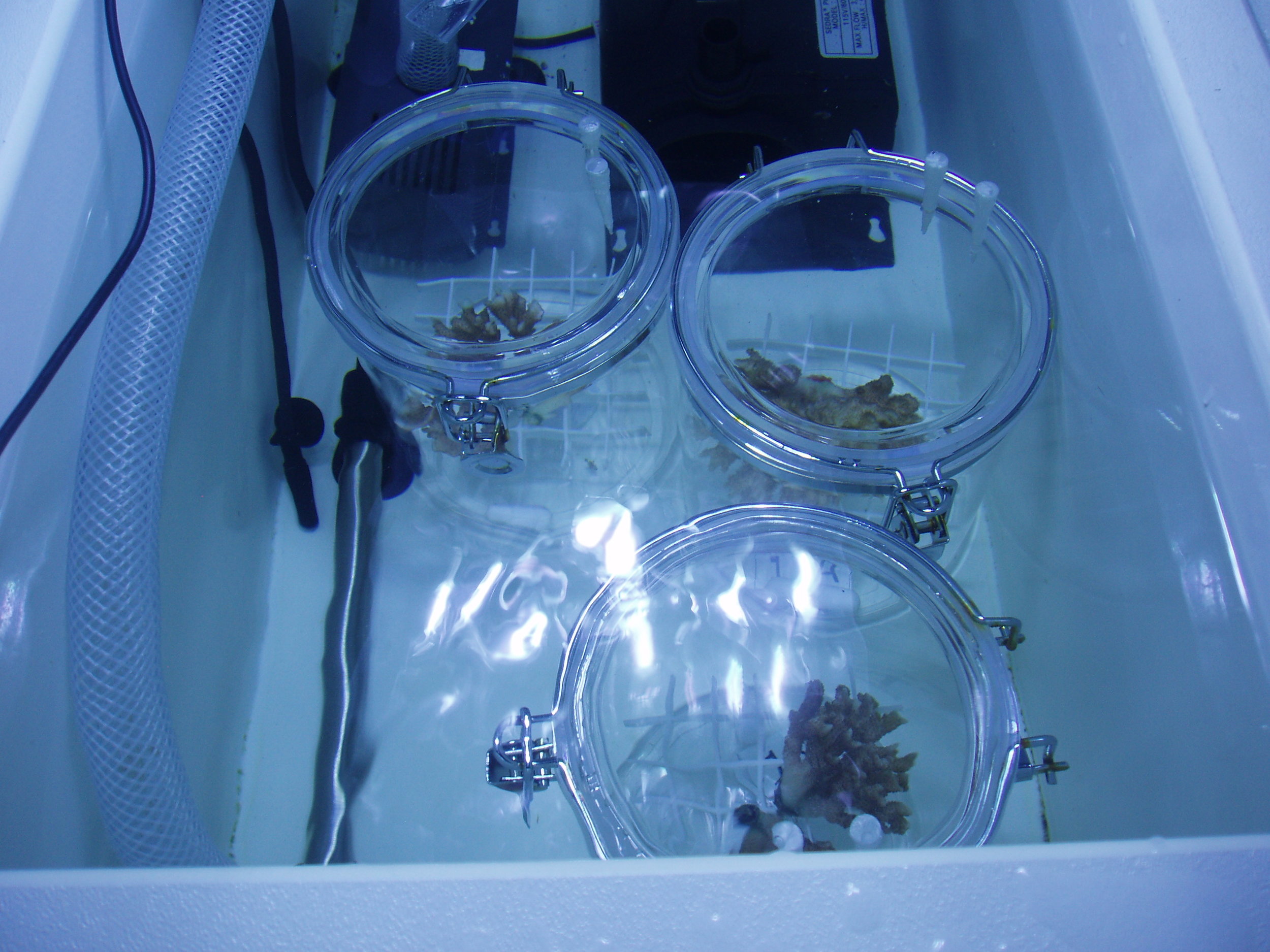Pocillopora damicornis adult pCO2 x temperature experiment (PDpCO2-adult)
This project was carried out with collaborator Dr. Hollie Putnam. We have not published the findings yet, but we are writing them up right now (May 2020), and I can tell you this: a 15-day exposure to a pCO2 of 850 ppm did virtually nothing to adult Pocillopora damicornis samples! The question is: does this experiment, all by itself, mean that OA is not a big problem or is it, perhaps, that these corals were from upwelling environments and so already have special adaptations for all manner of environmental change? Or maybe we just didn’t exposed them to high pCO2 for long enough? Also, please note that these corals were actually later genotyped as Pocillopora acuta (the two species were synonymized at the time of experimentation).
I have now finished analyzing the proteomes of 12 samples (3 from each of the 4 pCO2 x temperature interaction groups). For the raw mass spectrometry data from this study, please click here (batch 1: samples 1-6) and here (batch 2 (samples 7-11). For the interaction Pocillopora damicornis/P. acuta transcriptome server (albeit with data from a different study), please go here.
For the larval experiment (see here).
P. damicornis nubbins in respiration chambers (by Hollie Putnam).
Not much going on here, though, curiously, endosymbiont densities were higher at 29ºC. So corals had no problem upon doubling the pCO2. Let’s see what’s going on in their cells (keep scrolling/reading).
Given my recent loss of faith in transcriptomics, I have now used nano-liquid chromatography followed by mass spectrometry (MS) to analyze the proteins after labeling them with iTRAQ tags. This work was achieved through generous donations made by individuals and journals whose papers I edited and reviewed, respectively. Thanks everyone! All that being said, the PCA of the differentially expressed genes looks cool (next figure below).
Here are some preliminary results from the transcriptome analysis. Of the 36 differentially expressed genes (DEGs), 33, 2, and 1 were from the coral host (94%), either host or Symbiodinium (3%), and Symbiodinium (3%), respectively. This lack of an mRNA-level response to environmental change in Symbiodinium is similar to that documented by other researchers, but contrasts with my long-term temperature study, in which I found that a higher proportion of DEGs (weighted to account for the fact that Symbiodinium comprise only 30-40% of the biomass of P. damicornis) were of Symbiodinium, rather than host coral, origin.
Here are the proteomic data. Please note that only 15-20% of the proteins were properly labeled (this seems to be an unreported, though widespread, issue with the next generation proteomic methodologies). I am focusing on the 272 labeled proteins found in both mass spectrometry runs (of which 157 and 94 were of host coral and endosymbiont origin, respectively).







